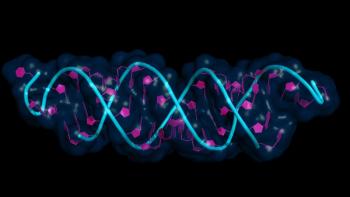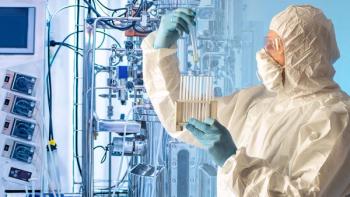
- BioPharm International-05-01-2009
- Volume 22
- Issue 5
When Less is More: Lean Can Help Reduce Costs and Improve Compliance Simultaneously
Use Lean techniques to improve manufacturing compliance
Biotech companies appear to be caught on the horns of an irresolvable dilemma. On one hand, they face more pressure than ever to reduce costs. On the other hand, the greater complexity of biotech manufacturing and the more challenging therapeutic areas it often addresses considerably raise the bar for achieving compliance. The conventional wisdom holds that Lean might reduce costs but it will put compliance at grave risk. And noncompliance isn't an option.
Chris S. Driscoll
As is often the case, the conventional wisdom is wrong. Rightly understood as a tool for improving business and manufacturing processes, Lean can help reduce costs and improve compliance simultaneously. The principle is simple: reduce waste. Eliminate redundancies and unnecessary steps and cost savings will not only occur, but compliance will improve as well. In fact, many compliance activities themselves involve unnecessary steps that not only waste money but also actively damage compliance.
AVOID REDUNDANT COMPLIANCE ACTIVITIES
Consider the case of a biotech and its attempt to meet FDA requirements. After an inspection, the agency informed the company that its quality systems were not robust enough to assess the effects of all the incremental changes the company had made to its processes over the years. In response, the company decided to build a "system evaluation operation," a redundant quality system that soon grew to nearly three dozen people. This elephantine operation only made compliance harder because collecting all of the data and assessments that had been promised to the FDA was virtually impossible to accomplish in a timely manner. As a result, the company often had to report instances of nonconformance. It was the worst of both worlds—higher costs and lower compliance. And it was an entirely self-inflicted wound that could have been avoided if the company had concentrated on improving its existing quality systems and showing evidence that those systems had matured.
In other cases, biotech companies accumulate costly and unnecessary compliance activities because of what amounts to company folklore about the FDA. When asked why they engage in a particular compliance activity, company personnel will often reply "because the FDA requires it." Often, however, it turns out that the agency requires no such thing. For example, at a biotech production and packaging site for a major global pharmaceutical firm, we noted that the good manufacturing practice (GMP) space was being cleaned by company employees when outsourcing the job could have saved money. When we asked about the practice, the response was: "The FDA requires that company employees clean GMP space." There is no such FDA requirement. In fact, with a little digging, we discovered that there was no such corporate requirement either.
In other cases, biotech companies know that some of their practices are redundant and costly, but they believe stripping out a prior commitment to the FDA and reporting the change will just precipitate more compliance headaches. The company doesn't want to simply stop supplying data from, for example, an extensive assay that has always been performed, so the practice continues, even though it's unnecessary. Further, redundant compliance activities suggest to the agency that the company doesn't trust its own methods to yield accurate results. The company paints itself into a corner and costs itself money year after year. Meanwhile, the FDA welcomes improvements in processes and has made it clear that it intends to encourage continuous improvement.
FROM GOOD INTENTIONS TO BEST PRACTICES
The big spending to gold-plate quality, the complying with non-existent regulations, and the care taken not to stir up the FDA are all intended to improve compliance. Ironically, those good intentions often produce the opposite result. And they're costly.
Instead of operating out of good intentions, it's far better to strive for best practices. It begins with a clear-eyed assessment of end-to-end processes guided by the simple Lean principle that waste is bad and should be eliminated now. The assessment may include step-mapping and in-depth interviews with personnel about what they do. And there should always be the question: why? Why do you do it that way? And if they say that the FDA requires it, then the question is "are you sure?" The next step is to check agency guidance and review correspondence with the agency, ideally in a searchable database.
In an assessment of two biotech plants operated by a leading global pharmaceutical company, we found hundreds of opportunities for cost savings. In isolation, many of the wasteful and unnecessary activities appeared to be relatively small matters, but in the aggregate they added up to millions of dollars in waste and significant amounts of time spent on compliance problems. Using Lean techniques to identify opportunities and eliminate wasteful and unnecessary activities, the plants were able both to improve compliance and lower costs. For example, the chances for noncompliance, whether caused by personnel or equipment, were greatly reduced by:
- eliminating process steps such as the 15-L inoculation in fermentation and the drying step in formulation to simplify the work flow
- eliminating unnecessary testing steps such as filters testing in media prep that caused the filter to fail
- increasing the short validated dirty hold time
- increasing batch size in purification reduced the overall number of batches run per year
- reducing the frequency of process steps such as column packing in purification from every 50 to 100 runs
- reviewing the environmental testing frequency to determine permissible reduction and elimination of tests, resulting in less testing
- evaluating the feasibility of setting frequency by location, based off trended historical data
- evaluating what was really necessary for non-aseptic class C
- automating laboratory air results to eliminate manual or paper-intensive processing.
All of these improvements were based on genuine FDA requirements, not phantom regulations, folklore, or merely good intentions. In effect, compliance was treated as a "pull" system, analogous to the pull system in heavy manufacturing, where the amount of material and the timing of activities are determined by what is necessary—and only what is necessary —as the product moves through the factory. In this case, however, pull is exerted by genuine, documented requirements, which determine what compliance activities are really necessary as the product is produced. By contrast, a "push" system heaps unnecessary compliance activities on products and processes in the mistaken belief that more is better.
In a pull system, less is more—producing dramatic improvements in return on investment, quality, efficiency, and cost. And because of the regulatory complexities of biotech drugs and the unnecessary activities they often generate, the number of opportunities for improvement is far greater than with small-molecule drugs. All that is required is a determination to take a hard look at business and production processes with fresh eyes, free of the conventional wisdom that efficiency puts compliance at risk. Then the operations executive under enormous cost pressure and the head of quality concerned about the next inspection can link arms and confidently declare that they want to eliminate waste because it saves money and improves compliance.
Chris S. Driscoll is principal at Tunnell Consulting, King of Prussia, PA, 215.422.2044,
Articles in this issue
over 16 years ago
QbD: Convincing the Skepticsover 16 years ago
The Least of Four Evilsover 16 years ago
Efficient Compliance Without Re-inventing the Wheelover 16 years ago
Establishing a Successful CRO–Client Relationshipover 16 years ago
Declining Market Demand Intensifies Competitionover 16 years ago
Comparative Effectiveness Research to Shape Biotech StudiesNewsletter
Stay at the forefront of biopharmaceutical innovation—subscribe to BioPharm International for expert insights on drug development, manufacturing, compliance, and more.





